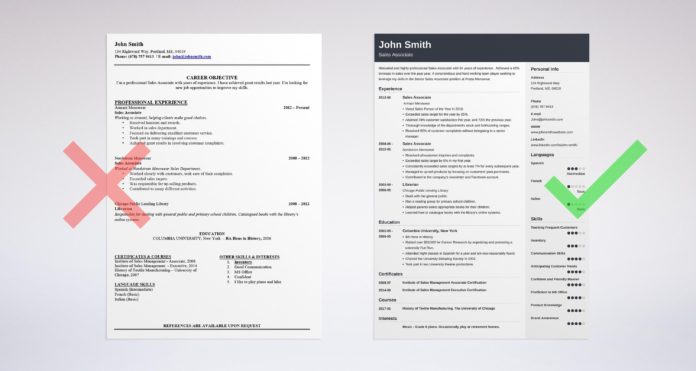
Hiring managers are some of the busiest people in the world. Particularly in a hiring season when tons of applications flood in, these hiring managers are usually inundated. According to Jobvite, the average job application receives at least 30 applications.
One key part of your application is your resume and this is a make or break for many prospective employees. If your resume is normal or fluff, it’s sure to get weeded out. That’s why it’s important to ensure your resume is not full of fluff and does not read like a thousand other applicants.
Your resume should be unique, catchy and hard to ignore. According to resumebuild.com, an outstanding resume is honest, clear, dynamic and digital. And this should start with your resume summary.
Understanding Your Resume Summary

Your resume summary, also known as the professional summary, is a critical component of your resume. It details your core competencies, experiences and achievements upfront. For a while, recent graduates looking for an entry-level job started their resumes by stating career objectives. However, this practice has been kicked to the curb and replaced in recent years with the professional summary.
The concept of the summary is this: if the hiring manager does not go through your whole resume, that person can just read the summary and have enough information about you to make a preliminary decision as to whether to go forward with you.
Why is Summary Important?
The resume summary is the first thing that a hiring manager sees on your profile. As it’s often said, “first impressions matter.” Remember, hiring managers usually have to sift through dozens of applications daily.
You may spend hours writing and tweaking your resume for a job but the hiring manager is likely to spend 15 seconds or less looking at it. If your resume summary doesn’t stand out at first glance, you’re sure to land in the pile of discarded applications.
For instance, simple grammar mistakes in your summary can convince the hiring manager that you’re not meticulous or thorough in your works. If you shabbily list your experiences and competencies without using engaging words, it won’t have much of a bite. Clearly, your resume summary is the difference between your dream job and an ignored application. Here are a few tips for tailoring your resume summary.
Think of the Elevator Pitch
Every job seeker needs to know what an elevator pitch is. It is a summary of your idea or product explained to anyone from the beginning to the end of an elevator ride. This usually lasts 20-30 seconds. Your resume summary is an elevator pitch of sorts. It’s designed to grip your hiring manager or anyone who sees your resume. It is supposed to make your resume scannable and provide a synopsis of what is contained in your resume.
No Fluff, Use Engaging Words

Don’t go on a winding journey of how awesome you are without highlighting your skills, strengths, and expertise. Write in the active voice and your sentences should be punchy and engaging. For instance, don’t start with “My name is…” when your name is already prominent on the application. This would be counted as fluff.
Start by making 4 or 5 bullet points about your expertise and experience. What would you want the employer to know about you? What skills, perspectives or expertise do you have that set you apart? How is that information in tandem with your employer’s requirements? Afterward, condense these 5 key bullet points into 3-4 interactive sentences.
Research
Even if your resume is designed for landing jobs generally or within your niche, it should always be edited and custom-made for each job you apply to. The way to do that is to understand clearly what the position you’re looking for entails. Do the following:
- Read about the history and background of the company. Many companies are adept at pointing out generic resumes. Such resumes give off the impression that you do not want the job bad enough.
- Read the position and the requirements thoroughly. Find out if your education and skills match the given description. Tweak your resume to highlight the skills and experience that closely match the requirements of the position.
- If necessary, read a bit about the hiring team and their quirks. A simple google search may land you reviews and comments about their hiring and interview process.
Use Keywords
As mentioned earlier, the world of hiring has changed and most hiring managers use software to cut through the clutter. In fact, 90% of all Fortune 500 companies use an ATS (Applicant Tracking Software) to review applications at the initial stages. These software use keywords to screen applications and to determine which ones should be discarded and which ones should be further reviewed by a hiring team.
So you may be a genius in your field of endeavor but if your resume is not optimized with the necessary keywords, it may be thrown out at the initial stages. For instance, if your employer has Adobe creative suite as part of the qualifications, putting Photoshop or Illustrator alone on your resume may not work. You’d have to tweak and describe your qualification as Adobe Creative Suite.
Highlight Your Strengths

Business people know what a “unique selling proposition” is. Simply, it is what makes you stand apart. In your summary, highlight the most important features and accomplishments of your life that are relevant to the job opening. You may be better off not using words such as awesome, hardworking, wonderful, etc as these words are all-too-common and empty.
Be careful not to overgeneralize your accomplishments. For instance, don’t say “… manager of an investment portfolio.” Rather, say “…managed a $2 million investment portfolio and supervised growth to $5 million over two years.” This data-driven approach is arresting and gives a hiring manager reason to read your resume fully.
In Conclusion
Whenever you send in an application for a job, you should realize that you are up against several other applicants. That’s why your application must stand out and be irresistible compared to others. To do this you’d have to make your resume speak volumes. One key way to accomplish that is to zero in on your resume summary and customize it. Another option Ladders suggest is to use resume templates that will allow you to both see what competitors will offer, but also to improve the final look of it.
Make the summary engaging, interactive and enticing to anyone who takes a look at your resume. It will land you interviews and jobs.
















